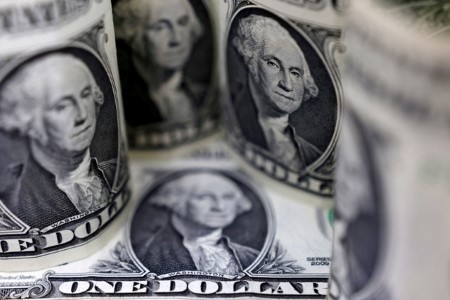




Philippines Trade Update: Trade trajectories trend along
 DOWNLOAD
DOWNLOAD

Policy Rate Updates: Double cut finale
 DOWNLOAD
DOWNLOAD

Monthly Economic Update: One for the road
 DOWNLOAD
DOWNLOAD


US yields slip as Fed likely to flag rate cut in September

NEW YORK – US Treasury yields slipped on Monday, with those on benchmark 10-year notes falling to two-week lows, as investors awaited this week’s Federal Reserve policy meeting in which the central bank is expected to signal the start of its rate-cutting cycle in September.
Yields on US five-year and seven-year notes, the so-called belly of the curve, slid to their lowest since March. Investors have been buying these maturities, specifically five-year notes, for the last few weeks on the belief that the long-term fed funds rate will rise. That reflects expectations that the Fed’s looming easing cycle will be a shallow one.
US five-year notes are perceived to have more upside in price, compared with 10-year Treasuries, when the Fed starts cutting rates.
Market participants estimated the Fed’s terminal rate at between 3%-3.5% as the US central bank is expected to maintain interest rates at 5.25%-5.50% for an eighth straight meeting this week.
The US rate futures market has fully priced in a rate cut in September, with about 68 basis points of cuts this year, according to LSEG calculations. This means two expected cuts of 25 basis points (bps) each, with a growing chance of a third in 2024.
“Investor expectations have really consolidated around no rate cut this week and a rate cut being priced in their next meeting,” said Bill Merz, head of capital markets research at US Bank Asset Management, in Minneapolis, citing easing inflation and a gradually slowing labor market.
“We’re seeing signals from asset prices confirming this broader, gradual deceleration as well to focus on global rate cuts.”
In afternoon trading, the benchmark 10-year yield slid 3.3 bps to 4.167% after dipping to a two-week trough of 4.151%.
US 30-year bond yields declined 3.7 bps to 4.419%.
The widely tracked US two-year/10-year yield curve deepened its inversion, or flattened to minus 22 bps, as investors unwound steepener trades put in place ahead of the Fed meeting.
Steepener trades, which involve increasing long bets on the shorter-end of the curve while reducing exposure in longer-dated maturities, are popular whenever the Fed embarks on an easing cycle. Investors buy the short end of the curve on the expectation their yields have peaked and the Fed is not going to raise rates anymore.
The US two-year yield, which typically moves in line with interest rate forecasts, was little changed at 4.383%.
The US five-year note yield fell 2.3 bps to 4.059%, while the seven-year yield eased 3.4 bps to 4.09.
Meanwhile, the US Treasury’s refunding announcement on Wednesday is expected to follow the pattern in May, when it said it intended to keep auction sizes steady for US notes and bonds over the next several quarters.
But Kim Rupert, Action Economics’ managing director for fixed income, said in a blog on Monday that officials could suggest the need for future increases, given the massive budget deficit and the ballooning debt servicing costs.
She expected the Treasury to continue boosting bill volumes to meet financing needs in the near term.
(Reporting by Gertrude Chavez-Dreyfuss and Chuck Mikolajczak; Editing by William Maclean and Richard Chang)
This article originally appeared on reuters.com





 By Reuters
By Reuters